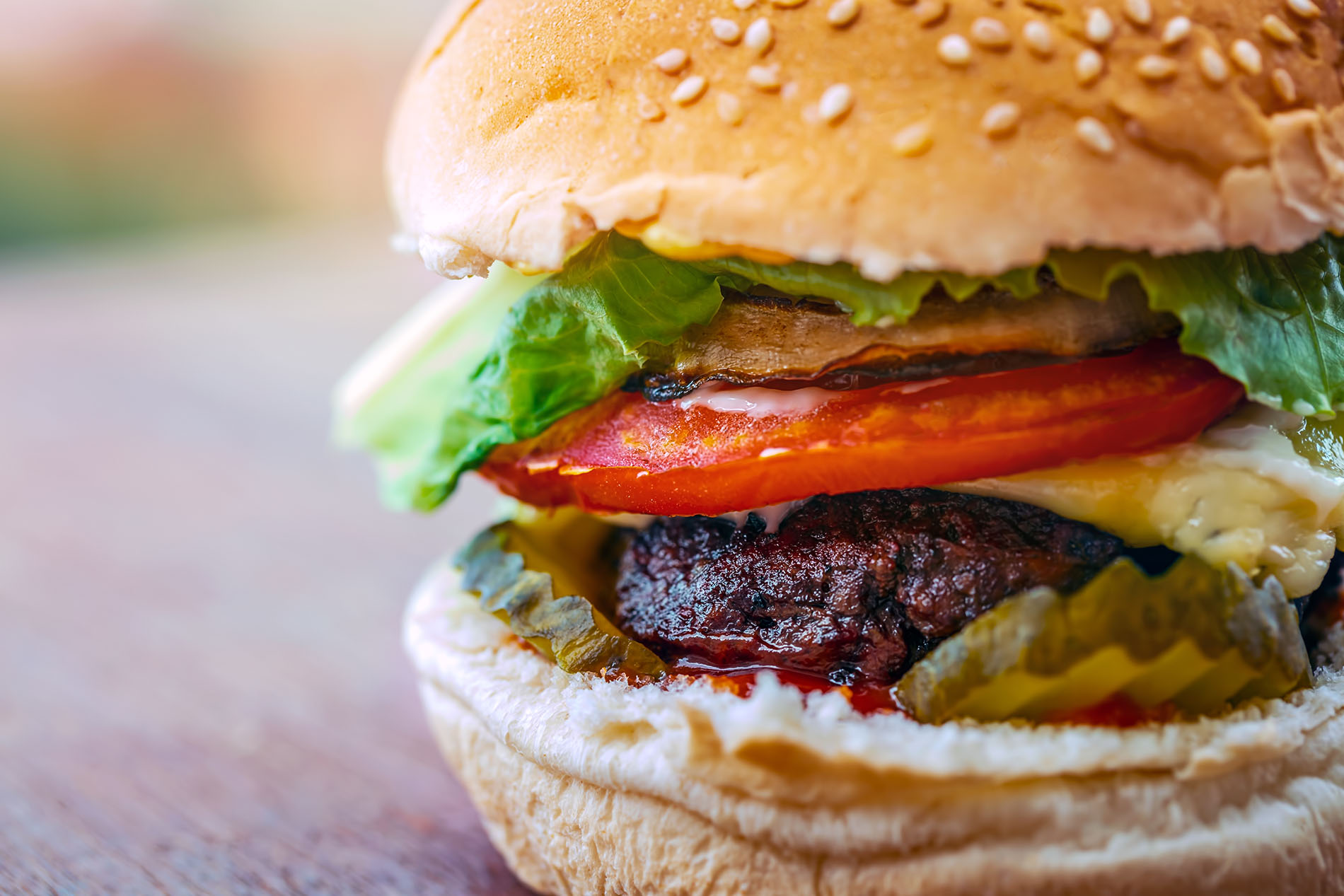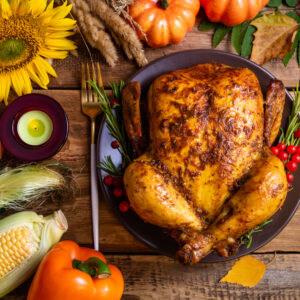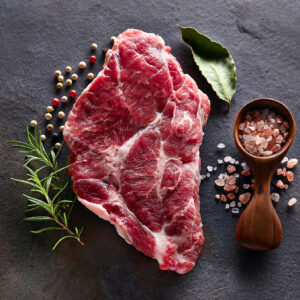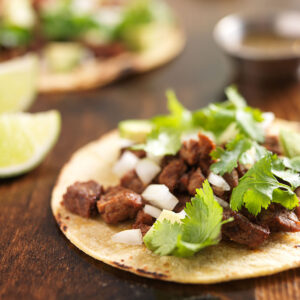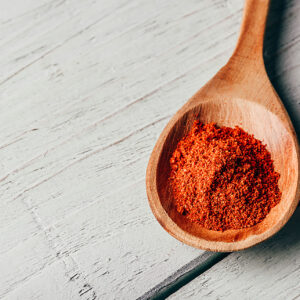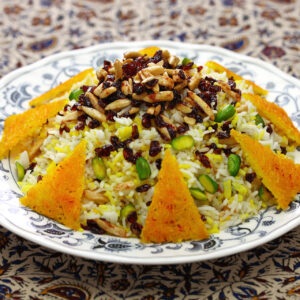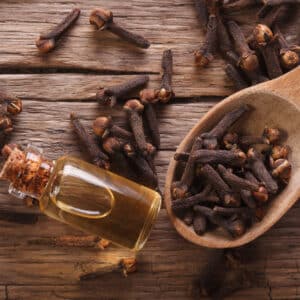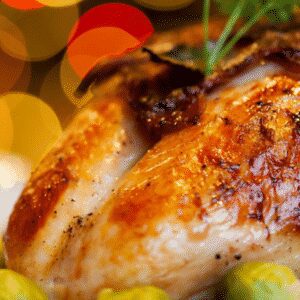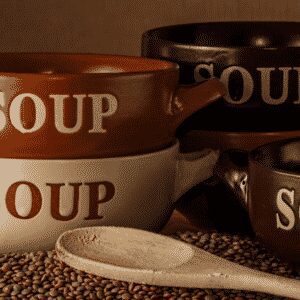Written by: Amanda Csolak for Spice Station Silverlake
Essential to American cuisine, burgers have a deep-rooted history dating back to the 19th century. From their humble origins as a simple, plain meat patty tucked between two pieces of sliced bread, to becoming an iconic fast-food legend. Burgers may have changed a lot over the years, but Americans only seem to love them even more. Today we will talk about burgers, from the origins of this infamous entrée to how the burger culture became what it is today. Later, I’ll share with you one of my favorite burger meat recipes, you won’t want to miss!
Burger Popularity
If you were to stand on a busy city street in any town across the United States, and ask any American to name a classic American food, more than fifty percent of those polled would likely say a burger. These days, the burger is staple food for many Americans across the country. Served for lunch or dinner, this delicious sandwich is as filling as it is easy to make. So it’s easy to understand why it became an American favorite. The burger did have some help getting to its popular status, but we will get into that a little later.
Burgers reign as one of America’s most versatile foods, boasting a rich history of many different versions that have evolved over time. When it comes to burgers, there’s something for everyone! Whether you’re a fan of the good ol’ classic or a sucker for those fancy gourmet creations, you’re in for a treat. So, check it out – here’s a compilation of some of the most beloved burger variations across the United States!
The classic cheeseburger stands tall as one of the most iconic of all the many different burger variations that exist today. Its simplicity is both delightful and satisfying, with a succulent beef patty sandwiched between two slices of bread, crowned with luscious melted cheese.
Another crowd-pleaser is the bacon cheeseburger, a delightful twist on the classic. Crispy, savory bacon joins forces with the gooey cheese and juicy beef patty, creating a symphony of flavors that’s an absolute favorite among diners and fast food enthusiasts alike.
If you’re the adventurous type, the gourmet burger is right up your alley. These mouthwatering creations come packed with unexpected toppings like creamy avocado, grilled mushrooms, and even fried eggs. Found in upscale restaurants and specialty burger joints, these gourmet wonders are a hit among food enthusiasts and those seeking bold, innovative flavors. So, whether you prefer the timeless classic or crave bold experimentation, the world of burgers has something incredible in store for you.
Next up, we have the veggie burger, tailored to vegans and vegetarians and those seeking a meat-free experience. Crafted from an assortment of ingredients like beans, tofu, and vegetables, these delectable alternatives are adorned with a plethora of flavorful toppings, including cheese and avocado. As a testament to their popularity, numerous fast food chains and restaurants now proudly feature veggie burgers on their menus, ensuring that vegetarians can partake in this timeless culinary delight.
Now, let’s talk sliders – the adorable, bite-sized burgers that capture hearts across America. Served in sets of two or three, these mini marvels are the ultimate snack or appetizer, often found in the cozy ambiance of bars and taverns. Whether relished on their own or as part of a larger meal, sliders deliver a joyful and portable way to savor that irresistible burger flavor.
American Burger Culture
Burger culture in America embodies a captivating tale of the nation’s cherished burger heritage and its profound adoration for this iconic fare. The hamburger has transcended mere sustenance to become a quintessential symbol of American cuisine, captivating the hearts and taste buds of people from diverse backgrounds. In the United States, burgers have grown to be more than just a dish; they have evolved into a cultural phenomenon that resonates deeply with people of all walks of life. In the United States, burgers are more than just food; they have become a cultural phenomenon.
The rise of fast-food chains played a pivotal role in popularizing burgers, making them easily accessible to people nationwide. Household names like McDonald’s, Burger King, and Wendy’s have become synonymous with American fast food, leaving an indelible mark on burger culture. However, it’s not only the fast-food giants that have contributed to this vibrant landscape. Gourmet burger restaurants, food trucks, and local diners have also played their part, adding to the richness and diversity of burger experiences across the country.
In recent times, the surge of foodie culture and cooking shows has further fueled the growth of burger culture in the US. As people become more adventurous with their tastes, burgers have emerged as a blank canvas for culinary creativity, allowing for an endless array of tantalizing variations. With social media at the forefront, burger enthusiasts eagerly share their love for these delights, showcasing their favorite recipes and ingenious creations.
Yet, burger culture in America extends beyond the realm of mere food; it encompasses the social and cultural experiences surrounding it. From heartwarming family gatherings and delightful picnics to late-night drives and spirited tailgating parties, burgers weave their way into the fabric of American life and traditions. Whether relished at a local diner, a fast-food joint, or an upscale eatery, these delectable delights epitomize the essence of the American spirit, evoking sentiments of comfort, convenience, and good times.
Top Ten Tips to Making Better Burgers
If you’re looking to create the best beef burger, these ten tips can be applied universally to all hamburgers, no matter your topping preference. However, you won’t find specific cooking instructions regarding heat source, strength, and timing on this list. Some chefs will try to tell you exactly how long to cook the patties on each side but I believe when it comes to transforming a raw patty into a perfectly cooked burger, there are no one-size-fits-all rules.
1. Use Freshly Ground Beef
Store-bought ground beef can be uncertain, leaving you unaware of its origin, freshness, and potential risks like E. coli. For the best results, aim for beef with at least 20% fat content, preferably from a trusted source. If that’s not available, consider grinding your own beef, which may seem intimidating at first, but the rewards are worth it. While a heavy-duty electric meat grinder is excellent, a KitchenAid attachment or a decent hand-cranked model can still yield far superior results compared to store-bought. Don’t have either? No worries – a food processor can do the job too. Simply follow the steps to dice, chill, and pulse the meat to your desired grind size. By grinding your own beef, you have complete control over the blend, fat content, and grind size, not to mention the bragging rights of being a master meat grinder.
2. Keep Everything Cold
In order to make the best burger possible you need the fat to stay in the meat. Ensuring the meat stays chilled, keeps the fat where its suppose to be, which is not all over your hands during prep. When grinding your own meat, be sure not only your meat, but your meat grinder parts, the feed shaft, the grinding blades and the plate are well chilled to keep the fat from sticking to everything.
3. Don’t Overhandle Your Meat
You may be surprised to hear that your ground meat, isn’t truly dead. Considering that ground meat in your hands reacts to your touch, the temperature changes and the seasonings you add to it. Excessive handling causes proteins to cross-link, resulting in denser, tighter burgers. For tender patties with cheese-catching nooks, grind the meat fresh and form the patties gently. Avoid adding onions, herbs, eggs, or bread crumbs directly to the ground meat, as it overworks the mix and leans towards meatloaf sandwiches. If you must include additives, mix them with the beef cubes before grinding, evenly distributing without overworking the beef.
4. Skip The Salt Until You Have Formed Patties
Whatever you do DO NOT add salt to your beef until you have formed the patties. Salt dissolves muscle proteins within the meat, those proteins then cross-link, leaving your burger more springy and sausage like in texture than the juicy, tender burger you were opting for. The best time to add salt to your burger meat is right before you put them on the grill. Once the salt hits the patty, it immediatley begins to dissolving the meat proteins, which in turn draws out the moisture, and adversely affecting the outermost texture of your hamburger patties.
5. Patty Shape and Size Matters
To achieve uniformly shaped and sized burgers, weigh your meat as you divide it and measure the patties as you form them. This ensures even cooking times for all your burgers. A digital scale and a good eye will do the trick. If your’e into bigger patties, equalying no less than six ounces, and looking to avoid the horrid “meatball syndrome”, then you can form your patties with a slight dimple in the center of the patty. This will allow the bigger patties to maintain their shape as they cook, instead of becoming an impossible to eat blob.
6. Don’t Hold Back On Seasoning
Salt and pepper are vital for flavorful burgers. Use freshly ground black pepper for enhanced taste. Sprinkle a large pinch of sea salt from a distance of at least eight inches above the patties for even coverage. Don’t let anyone dictate your burger’s taste; season it as liberally as you prefer.
7. Don’t Fear the Flip
Forget the old advice about flipping burgers only once while cooking. Recent findings reveal that frequent flipping (even every 15 seconds) leads to faster, more even internal cooking, reducing grill time by up to one-third. While constantly flipping a grill full of burgers might be impractical, there’s no need to go crazy. Just smile and nod if you encounter a backyard-grill enthusiast advocating for one flip. Later you can prove him wrong once your perfect burgers are ready to eat!
8. Keep Track of Temperature
You can try to guess a burger’s doneness by poking it, but an instant-read thermometer is the way to go for precise results. Keep in mind that beef will continue to cook for a bit after its removed from the heat source so be sure to consider some carryover cooking and remove them a few degrees before the desired doneness. Allowing them to rest and finish cooking for a few short minutes before plating. Aim for 130°F (54°C) for medium-rare, but feel free to adjust based on personal preferences:
- 120°F (49°C) and below: rare (red/raw center)
- 130°F (54°C): medium-rare (pink and warm)
- 140°F (60°C): medium (totally pink, starting to dry out)
- 150°F (66°C): medium-well (grayish-pink, drier)
- 160°F (71°C) and above: well-done (completely gray, less moisture)
9. Pick the Best Buns
Choose your burger buns wisely, as they come in various shapes, sizes, densities, and flavors. For smaller, thinner patties like griddled burgers or sliders, Martin’s potato rolls are ideal, but any soft, standard supermarket bun will suffice. However, for larger, juicier pub-style burgers, opt for sturdier rolls to handle the juices without dissolving. Artisan bakery custom burger buns or brioche are excellent choices. Avoid overly chewy or tough buns to prevent the dreaded burger backslide. Prioritize the beef flavor by selecting buns that complement rather than overpower it.
10. Don’t Let Others Tell You What Toppings to Use
I love cheddar cheese, sautéed yellow onions, crispy bacon, yellow mustard, creamy mayo and sliced heirloom tomatoes on my burger. My husband prefers to avoid the veggies and tops his burger with copious amounts of Applewood smoked bacon and American cheese. Thing is, there is no wrong way to eat a burger. Never let anyone tell you differently. So whether you want to enjoy your burger plain or pile on the toppings, you do you and don’t be ashamed for it.
Shopping For Burger Seasonings
When it comes to shopping for seasonings, whatever you do, stay away from the season aisle in your local grocery store. Those bottles are filled with old seasonings and preservatives so they can sit on the shelf in the store for months before you add it to your cart. I highly recommend finding a place the specializes in spices. I personally shop for all my spice needs through Spice Station Silverlake. They have everything you need from various kinds of salt and pepper, to less commonly found spices from the East. Spice Station Silverlake is my favorite place to shop for all my spice needs. Check them out today, I promise you won’t be disappointed.
Best Burger Recipe
This burger recipe will have your friends and family asking for more. Warning! Don’t make these unless you want to be crowned the King (or Queen) of burger making. Proceed at your own risk.
Prep time: 5 minutes
Cook time: 8 minutes
Yields: 4 servings
Supplies You’ll Need: A small mixing bowl, a clean counter surface or large meat safe cutting board or cooking sheet, a chilled meat grinder, a plate, an outdoor grill, a grill spatula, and a pair of latex or rubber gloves.
Ingredients:
- 1 lb. freshly ground beef
- 1 tbsp. Olive oil
- 1 tbsp. Worcestershire sauce
- ½ tsp. Garlic powder granules
- 1 tsp. Himalayan Pink Salt (or more to taste)
- ½ tsp. Smoked Black Pepper (or more to taste)
- 4 slices of cheddar cheese (optional)
Instructions:
- Place all seasonings except for the salt into a small mixing bowl, blend together and set aside.
- Wearing gloves, grind chilled meat, blending seasonings in slowly as you go.
- Shape into 1/2 in (1 cm) thick patties, about 1/4 pound each. Make a thumb print in the center of each patty to keep the burgers from bulging out when cooking.
- Preheat an outdoor grill to medium-high heat. Add the burgers and cook 4-5 minutes with the lid closed, until browned on the bottom and the only juices visible are no longer red. Do not push down on the burgers or move them around. and cook 2-3 minutes for medium, or until done as desired (For best results, use a meat thermometer. See time and temp chart in the post above!)
Be sure to flip over during cooking to allow the meat to cook evenly. Just before removing the patties from the grill you may top with cheese if desired. (For best results, use a meat thermometer. See time and temp chart in the post above!) - Remove burgers from heat. Let the burgers rest for a few minutes before serving and enjoy!

